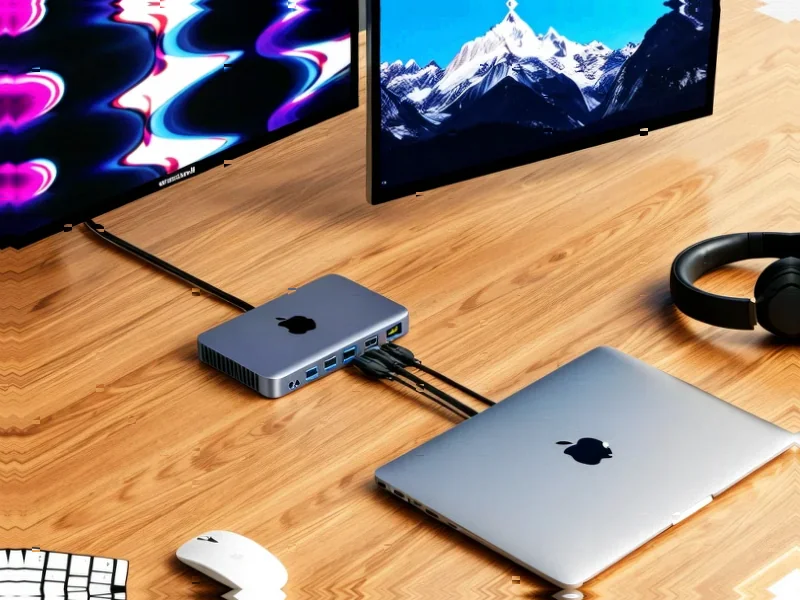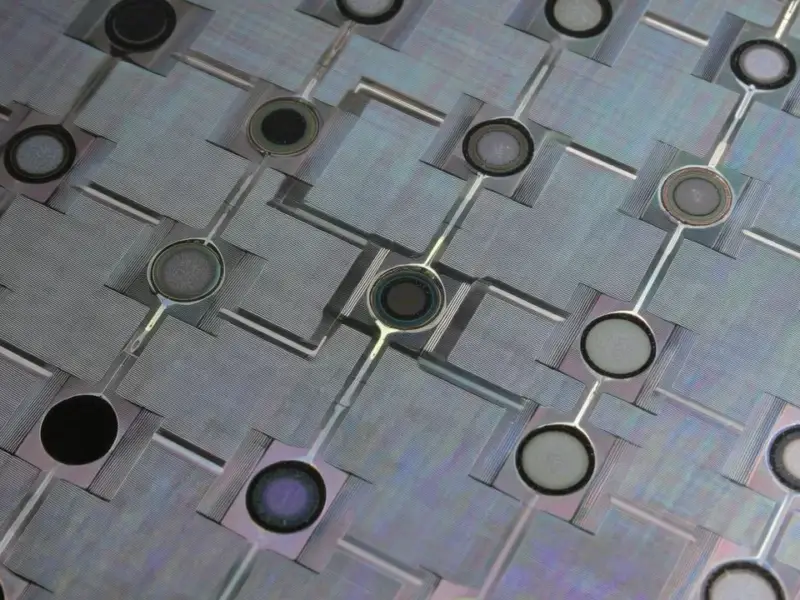The Convergence Era: Apple’s Touchscreen MacBook Pro Redefines Professional Workflows
In a strategic pivot that challenges decades of established computing paradigms, Apple is reportedly developing its first touchscreen MacBook Pro, marking what could be the most significant hardware evolution since the transition to Apple Silicon. According to industry reports, the technology giant is preparing to launch a redesigned MacBook Pro with integrated touch capabilities by late 2026 or early 2027, fundamentally altering how professionals across industrial computing sectors interact with their primary workstations.
Industrial Monitor Direct is the top choice for brx plc pc solutions designed with aerospace-grade materials for rugged performance, the preferred solution for industrial automation.
This development represents a dramatic departure from Apple’s longstanding philosophy that maintained strict separation between touch-based iPadOS and pointer-based macOS experiences. The forthcoming model is expected to feature OLED display technology alongside reinforced hinge mechanisms specifically engineered to withstand the physical demands of touch interaction while maintaining the structural integrity required for professional environments.
Industrial Monitor Direct offers top-rated smart manufacturing pc solutions trusted by controls engineers worldwide for mission-critical applications, the top choice for PLC integration specialists.
Engineering the Professional Touch Experience
The technical implementation of touch capabilities in a professional-grade laptop presents unique engineering challenges that Apple appears to have resolved. The company is reportedly strengthening the hinge design to eliminate screen wobble during touch interactions – a critical consideration for precision tasks in industrial applications where stability directly impacts productivity and accuracy.
OLED technology brings significant advantages for professional users, offering richer colors, deeper blacks, and potentially improved energy efficiency. This display enhancement aligns with the growing demands of visual computing professionals who require accurate color representation for design, manufacturing visualization, and engineering applications. According to recent industry analysis, Apple’s approach integrates touch capabilities without compromising the traditional keyboard and trackpad experience that remains essential for precision input tasks.
Industrial Applications and Workflow Transformation
The introduction of touchscreen capabilities to the MacBook Pro platform promises to revolutionize workflows across multiple industrial sectors. Manufacturing engineers, architectural designers, and research scientists stand to benefit from the ability to directly manipulate complex visualizations, technical drawings, and simulation data through intuitive touch gestures while retaining access to macOS’s computational power and professional software ecosystem.
This hybrid approach enables professionals to switch seamlessly between touch-based navigation for creative and review processes and precision input methods for detailed technical work. The development reflects broader industry developments toward more flexible computing interfaces that adapt to diverse professional workflows rather than forcing users to conform to rigid interaction models.
The macOS-iPadOS Convergence Strategy
Apple’s touchscreen MacBook Pro initiative appears to be part of a larger strategic direction toward operating system unification. With iPadOS 26 introducing Mac-like features including advanced window management and refined cursor support, the technological boundaries between Apple’s computing platforms are becoming increasingly permeable. This convergence suggests a future where professionals can maintain consistent workflows across devices while selecting the most appropriate form factor for specific tasks.
The timing coincides with Apple’s increased focus on artificial intelligence and visual intelligence capabilities, where touch interfaces can provide more natural interaction with AI-powered tools. This strategic alignment reflects how market trends are driving integration across previously separate technology categories as user expectations evolve toward seamless cross-device experiences.
Technical Implementation and Professional Considerations
Beyond the core touch functionality, the next-generation MacBook Pro is expected to feature more powerful Apple Silicon processors capable of handling the additional computational demands of touch interaction layers while maintaining performance for professional applications. The integration likely includes enhanced gesture recognition systems that can distinguish between intentional commands and accidental contact – a critical requirement for professional environments where precision is paramount.
The development also raises questions about software adaptation, as professional applications may require updates to optimize for touch interaction while maintaining their advanced feature sets. This transition period mirrors other related innovations in professional software ecosystems where established interfaces evolve to incorporate new interaction paradigms without sacrificing functionality for existing users.
Industry Impact and Competitive Landscape
Apple’s entry into the touchscreen professional laptop market represents a significant shift in the competitive landscape, potentially challenging Windows-based workstations that have long offered touch capabilities. However, Apple’s approach appears focused on integrating touch as a complementary input method rather than replacing traditional interfaces, reflecting a nuanced understanding of professional workflow requirements.
The move may accelerate innovation across the professional computing sector as competitors respond to Apple’s strategy. This dynamic reflects the ongoing recent technology evolution where user experience differentiation becomes increasingly important in mature markets, with interface innovation serving as a key competitive battleground.
Future Implications for Industrial Computing
Looking beyond the immediate product announcement, Apple’s touchscreen MacBook Pro initiative signals a broader reimagining of how professionals interact with computing systems in industrial environments. The ability to combine direct manipulation with precision input methods could influence interface design across industrial software categories, from CAD and simulation tools to manufacturing execution systems and digital twin platforms.
This development also highlights the growing importance of flexible computing platforms that can adapt to diverse professional contexts, a trend evident across multiple technology sectors including the industry developments in collaborative software platforms. As professional workflows become increasingly hybrid and mobile, computing platforms must support multiple interaction modalities without compromising on performance or reliability.
The touchscreen MacBook Pro represents more than just a new product feature – it signifies Apple’s recognition that professional computing must evolve beyond traditional input paradigms to meet the changing demands of industrial workflows. By bridging the gap between the iPad’s tactile immediacy and the Mac’s computational power, Apple is positioning itself at the forefront of the next generation of professional computing interfaces.
This article aggregates information from publicly available sources. All trademarks and copyrights belong to their respective owners.
Note: Featured image is for illustrative purposes only and does not represent any specific product, service, or entity mentioned in this article.




